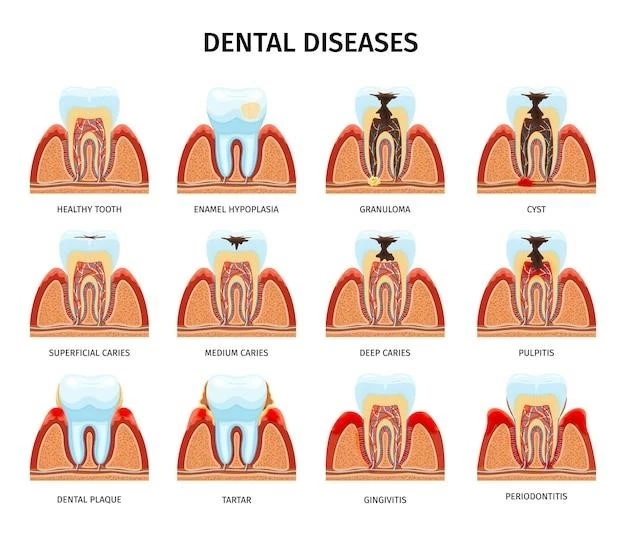The syndrome steatocystoma multiplex and natal teeth is characterized by the presence of teeth at birth and multiple skin cysts...
Definition and Characteristics
The syndrome steatocystoma multiplex and natal teeth is characterized by generalized multiple steatocystomas and the presence of teeth at birth, known as natal teeth. It is often associated with genetic mutations in the KRT17 gene and may manifest as intradermal cysts in various areas of the body.
Causes and Genetic Factors
Steatocystoma multiplex with natal teeth is linked to genetic mutations, often in the KRT17 gene, potentially hereditary or arising spontaneously.
Inheritance Patterns
Steatocystoma multiplex with natal teeth may exhibit an autosomal dominant inheritance pattern related to genetic mutations in the KRT17 gene. Understanding the genetic basis is essential for risk assessment and genetic counseling.
Clinical Presentation
The presence of teeth at birth and multiple skin cysts are key characteristics of the steatocystoma multiplex with natal teeth syndrome. Skin cysts can develop anywhere on the body.
Symptoms and Manifestations
The syndrome presents with generalized multiple steatocystomas, often leading to inflammation and tenderness. Additionally, the presence of natal teeth at birth further characterizes the condition;
Diagnosis of steatocystoma multiplex with natal teeth primarily involves genetic testing and clinical examination for skin cysts and the presence of teeth at birth. Differential diagnosis may include other skin conditions with cystic manifestations.

Diagnosis and Differential Diagnosis
Diagnosing steatocystoma multiplex with natal teeth involves genetic testing and clinical evaluation for the presence of teeth at birth and skin cysts. Differential diagnosis may include other skin conditions with similar presentations.
Treatment Options
Oral isotretinoin may be used to temporarily reduce inflammation and size of cysts in steatocystoma multiplex with natal teeth, but it is not curative.
Medical and Surgical Interventions
Oral isotretinoin may offer temporary relief by reducing inflammation and cyst size in steatocystoma multiplex with natal teeth. Surgical removal of cysts by excision is an option, but these procedures may not provide a permanent solution.
Prognosis and Complications
Prognosis for patients with steatocystoma multiplex with natal teeth depends on symptom management. Potential complications include cyst inflammation and tenderness, which may require medical or surgical interventions.
Long-Term Outlook and Risks
The long-term outlook for individuals with steatocystoma multiplex with natal teeth varies based on symptom progression and management. Risks include potential cyst inflammation and the recurrent nature of the condition, necessitating ongoing medical intervention.

Research and Future Directions
Ongoing research aims to further understand the genetic basis of steatocystoma multiplex with natal teeth and develop improved treatment strategies for symptom management and potentially curative approaches.
Ongoing Studies and Genetic Research
Research is focused on understanding the genetic mutations related to steatocystoma multiplex with natal teeth. Ongoing studies aim to identify novel treatment approaches and enhance diagnostic strategies through genetic testing.
